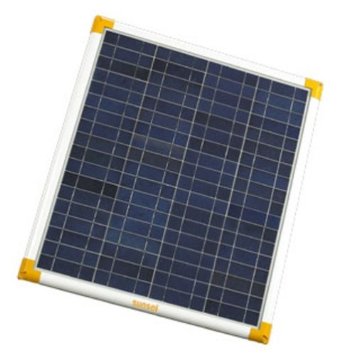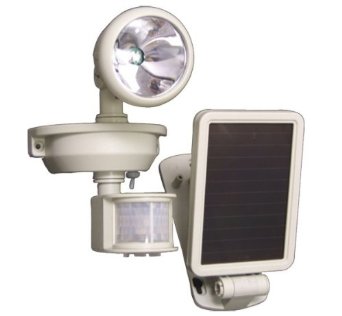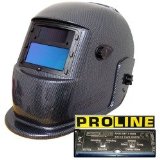Sunforce 39110 123-Watt High-Efficiency Polycrystalline Solar Panel with Sharp
Sunforce 39110 123-Watt High-Efficiency Polycrystalline Solar Panel with Sharp Module
- Advanced polycrystalline design is highly efficient and provides superior power output
- Maximum power output: 123 Watts/7.16 Amps
- Multiple panels can be connected together for even more power
- Easy to install and virtually maintenance-free
- 25-year warranty
SHARP polycrystalline 123W solar kit that can produce 7.16 amps. Kit comes complete with a male D/C plug, mounting bracket and screws, battery clamps, voltage tester, quick connectors, and extra wiring. Ideal for boats, RV, 12v battery charging, pumps, satellite dishes, and many other uses. Easy to install, weatherproof, and allows for connecting multiple panels for more power. Unit has a 25-year warranty.The Sunforce 39110 123-Watt High-Efficiency Polycrystalline Solar Panel Module will give you several more reasons to love the sun. It provides the power you need, while helping you save money and protect the environment. This panel is ideal for cabins, recreational vehicles, remote power, back-up power, and 12-Volt battery charging. This panel comes with compatible wiring, accessories and a voltage tester to help you start producing up to 123 Watts of clean, free power in all weather conditions.
Sunforce panels can be easily added to new or existing systems.
List Price: $ 899.99
Price: $ 649.95





New Camping Freedom,
I purchased one of these about 8 months ago, along with the Sunforce digital 30-A controller and Duracell 800-w inverter to use on our motorhome when in campgrounds with no hookups or when boondocking. Works great! Really nice to have the extra freedom, and to not run the noisy/smelly generator. Provided plenty of battery charge for lighting, furnace fans, laptop, TV, etc for week long trip to Oregon outback in September. Have also used for numerous 3 – 5 day stays in California and Arizona in Feb – Apr. I built a portable/adjustable stand that takes only a few minutes to set up.
Was this review helpful to you?

|Work great!,
I purchased one and was so happy with it, that I bought a second one. So I have two on my balcony leaning against the house facing southwest (in Los Angeles.) These go into separate, independent 30 amp Sunforce controllers. Normally they are both charging two marine deep-cycle batteries hooked in parallel to a 2KW (square wave) inverter which stays on all the time. Since the inverter draws so little power when not being used, I see no reason to turn it off and on all the time. I use it to power mostly lights at night in my bedroom, but occasionally my vacuum, laptop, and such. I also power several items directly from the batteries 12 Volt taps, including cell phone chargers and the like designed to run on 12 volts. Works great. When the marine cells are fully charged, I also switch one controller to GEL CELL and charge some gel cells I use to pump shower water onto my lawn. We have water restrictions here in Los Angeles, and I see no sense it just letting mine go down the drain. I use less than 25% of my water quota every month, and as a result, don’t pay higher rates for the water I do use. Since these solar panels can put out nearly 10 amps each, they make quick work of charging two marine batteries. I wouldn’t count on powering your house directly from just two panels unless you have a way to store the power like batteries.
A watt is a watt so you can add up the wattage that you use in your home and double it (safety margin and you can’t expect your panels to pump out 100% power all the time.)
The formulas, if you care, are:
P=I x E where P is the power in watts, I is the current in amps, and E is the electrical voltage soooooo…
123 watts = 10(ish) amps x 12 volts
So you can get up to 10 amps at approximately 12 volts.
That translates to 1 amp (assuming 100% efficiency) at 120 volts.
123 watts =1 amp x 120 volts. (I am fudging the math ever so slightly because, obviously 123 does not equal 120)
So if your house pulls 50 amps of power all the time (yeah right – only if you are running air conditioning all the time with 4 TVs on and your freezer with the door open) you would need 50 panels (working at 100% rating ha ha ha) to power your house during the day. Now account for the fact that you will probably not get 100% out of your panels for numerous reasons, account for the transmission loss, general inefficiencies in conversion to AC, and general, 50% engineer’s markup insurance, you would probably want between 75 and 100 panels to meet your electrical needs. When it gets to that kind of cost, you are better off buying wholesale, and taking the deductions and cash from your electric company.
Just remember that your house would probably only pull more than 50 amps at peak times and if you also use battery backup for storage, not only will you also have power at night, but the juice from the batteries will help buffer any surges from starting up your A/C, hot tub, washing machine, table saw, or other unreasonable industrial machinery you might be playing with in your garage.
Was this review helpful to you?

|Great panel, but check the voltage tester,
I purchased 4 of these for a small home solar system. I didn’t have an optimal location to put them, so are shaded sometimes, but still put out a decent voltage even when the sun is setting and sunlight is not direct. They each come with an LED voltage tester, so I built 2 of them into the system to montior the panel & batteries. One caveat about those little testers though – the ones I got were defective. The upper LED will burn out quickly. This is because a zener diode was installed instead of the correct 910 ohm limiting resistor for this LED. I would recommend opening up the unit before using it and checking this. Actually I replaced all six 910 ohm resistors with 1.5k’s to reduce the current draw to about 10 mA per LED, since they are in continuous use. Overall this is a great product so far.
Was this review helpful to you?

|